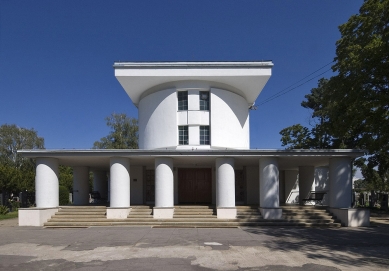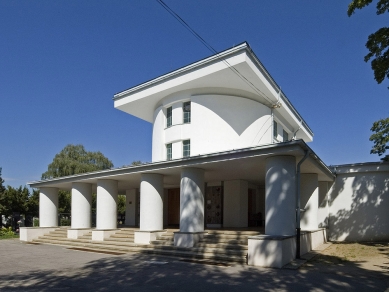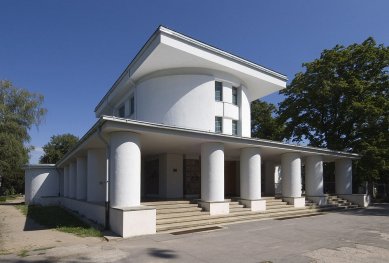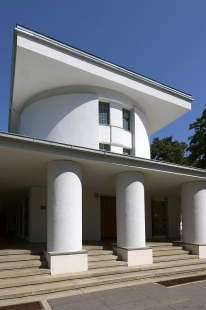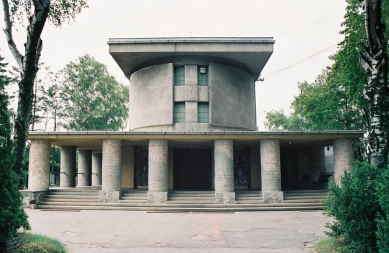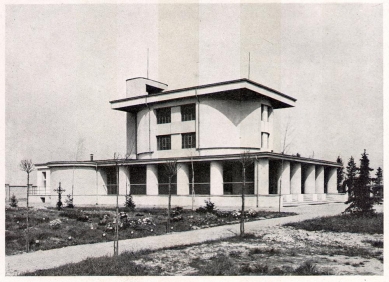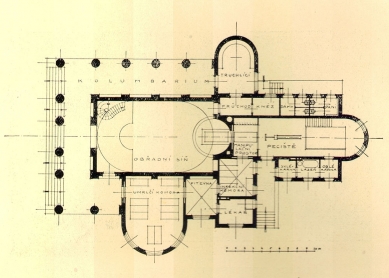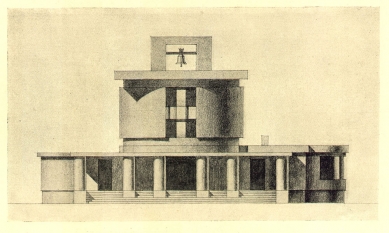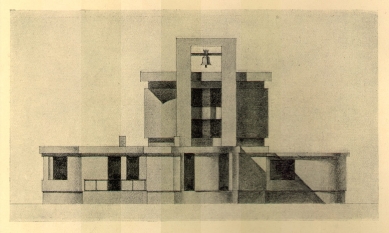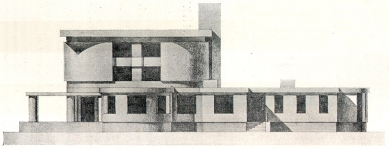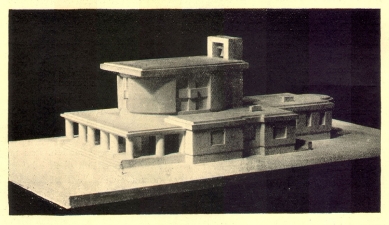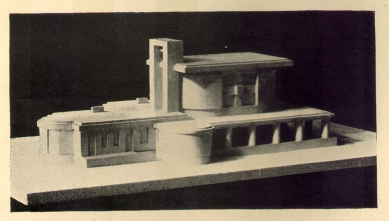The Nymburk crematorium, realized between 1922-24, is an exceptional building in the history of Czech architecture - it is one of the few projects by architect Bedřich Feuerstein (in collaboration with
Bohumil Sláma) and is also one of the first purist architectures built in our territory. It is a strictly simple building that focuses attention on elemental geometric forms. The mass of the ceremonial building elegantly transitions from a rectangular plan on the ground floor to an oval on the upper floor above the massive portico. The interior space, although reduced to elementary shapes, is no longer decorative but rather functional bodies that are aesthetically significant, approaching Ozenfant's and Jeaneret's demand to use Platonic "unchanging elements" in creation. The ceremonial hall is no longer shrouded in mystical gloom as in Ostrava or Pardubice; symmetrically placed windows on four sides allow plenty of light to flow in. The influence of the revolutionary architecture of
Boullée and
Ledoux on this building was first mentioned by Vladimír Šlapeta in our country; however, it was primarily Enlightenment ideas that affected the entire Devětsil avant-garde and resonated with the apotheosis of rationality and truth to which the purists inclined, in order to establish a new order.
The English translation is powered by AI tool. Switch to Czech to view the original text source.


